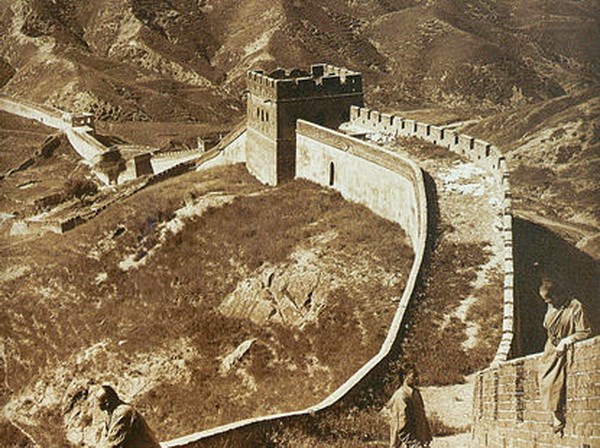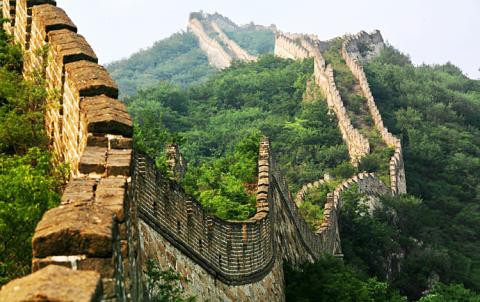Reveal more ruins of Van Ly Truong Thanh after 2000 years
Recently, archaeologists have discovered the remains of the Great Wall along the border of the Ningxia Autonomous Region (Ningxia), Northwest China and Gansu Province (Gansu).
Discover more of Van Ly Truong Thanh ruins after 2000 years
This finding completely erases the notion that this area has no segments of the Great Wall.
Ruins were found to consist of nine sections with a total length of more than 10 km , believed to be the Wall of the City built from the Qin Dynasty (221-206 BC).

A part of the ruins of the Great Wall has just been discovered
Zhou Xinghua, a former curator of the Ningxia Autonomous Region Museum, is also an expert on the Great Wall and a number of other researchers discovered the ruins in March this year. Thanks to this new discovery, historians have a better understanding of where the wall was built. Mr. Zhou said: 'In the end, we were able to see the complete picture of Qin's Great Wall.'

The Great Wall is an important historical and cultural relic of China
The newly discovered section of Wall City was built of blocks of rock and large blocks of land, stretching from Nanchangtan (Nanchangtan) village in Ningxia to Jingyuan (Jingyuan) district of Gansu Province. Due to floods and natural erosion, the height of these sections has been reduced from 1 to 5m. In order to prevent foreign invaders from entering the Yellow River when frozen, Qin built fortifications along the river valley.
The Great Wall has been recognized as a World Heritage Site by UNESCO since 1987. In the 11th Five-Year Plan (2006-2010), the Chinese Government has spent over 500 million yuan (about 81.6 million USD). to protect this great historical work.
- Shocking discovery of the new Great Wall
- A segment of the Great Wall of the Great Wall collapsed
- Thrilling anecdotes about Quan Van Truong (Part 2)
- Discovery of architectural ruins 1,400 years ago
- Beautiful scenes come to
- Thanh Hoa: Fishermen catch 3 sharks near the shore
- Discovering new species in Truong Son mountain range
- Chinese fairytale scene in British newspaper
- Finding precious stone objects weighing nearly 20kg
- Discover new bats in Truong Son forest
- Unmanned aerial map of Peru ruins
- Milestones of national sovereignty over Truong Sa archipelago
 Discovered an ancient centipede fossil 99 million years old
Discovered an ancient centipede fossil 99 million years old Discovered bat-like dinosaurs in China
Discovered bat-like dinosaurs in China Discovered a 200-year-old bronze cannon of the coast
Discovered a 200-year-old bronze cannon of the coast Discover 305 million-year-old spider fossils
Discover 305 million-year-old spider fossils